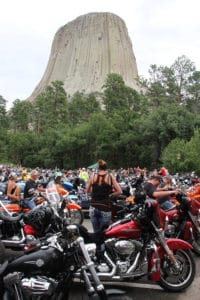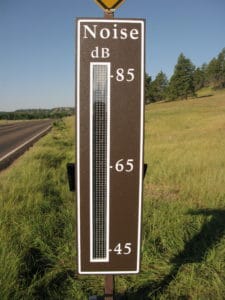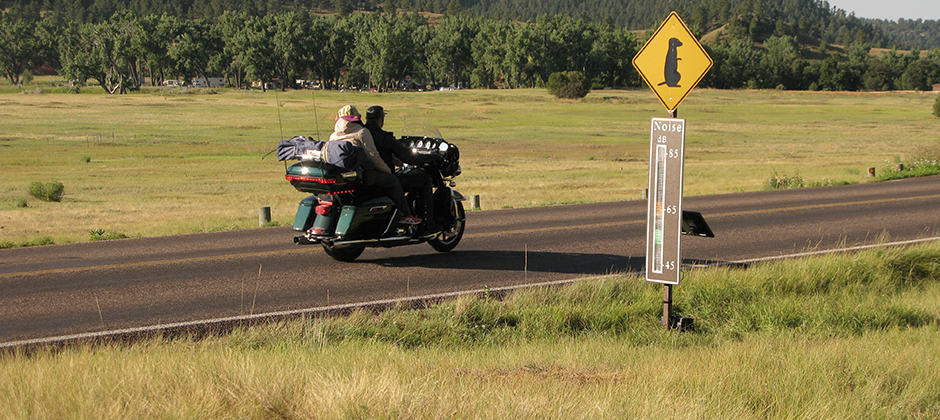Share this article
Giant motorcycle rally affects wildlife in national park
The sounds of revving engines and accelerating choppers during South Dakota’s famous Sturgis Motorcycle Rally changes the activity of several wildlife species in the national monument where one of the events takes place.
“We found that most species shifted their behavior to avoid motorcycle traffic,” said Rachel Buxton, a conservation biologist at Carleton University in Ottawa and the lead author of a study recently published in Global Ecology and Conservation.
The Sturgis Motorcycle Rally is one of the largest motorcycle events in the world, drawing hundreds of thousands of people every year to the tiny South Dakota town. One of the main events of the 10-day rally, the Devils Tower Run, also known as “riding the lasso,” involves a trip through the Devils Tower National Monument, which is home to numerous wildlife species.

Motorcyclists beneath Devils Tower. ©Rachel Buxton
Buxton and her co-authors wanted to see how the motorcycle rally affected wildlife in the area. They surveyed a number of species before, during and after the event, both in areas that were close to the road and relatively far from it.
They found that while the noise was louder near the road, it permeated even the farthest survey areas in the national monument.
Some of the most affected animals were bats, which they surveyed using ultrasonic recordings.
“We found that the activity levels of different bat species were much lower during the motorcycle rally and it remained low for several weeks after the rally,” Buxton said.
White-tailed deer (Odocoileus virginianus) also responded by leaving the road area to forage elsewhere, but they resumed their regular activity more quickly than the bats — nearly right after the event was over.

A traffic noise sign may make motorcycle enthusiasts more conscious of the sounds they make, particularly around sensitive wildlife areas. ©NPS Photo
The team also surveyed black-tailed prairie dogs (Cynomys ludovicianus), though there was only one colony of these in the study area, right next to the entrance of the monument. While they didn’t manage to monitor prairie dog activity before the rally, they found that their behavior was very different during the rally compared to after.
During the rally, the rodents spent more time than usual underground, and when they were above ground they spent more time observing their surroundings. “The prairie dogs were a lot more alert,” Buxton said.
But not all animals seemed to be bothered by the motorcycles. Buxton said that western wood-pewee (Contopus sordidulus) vocal activity showed little change during the rally and before and after, which surprised the researchers since they would have assumed that the birds would be affected, especially their vocal output.
Overall, Buxton said that this kind of information is useful for understanding the kinds of effects that these large events might have on species. “There’s been a lot of effort in the Park Service to reduce the noise from motorcycles,” she said.
The good news is that many motorcycle enthusiasts are conscious that the noise they generate may affect wildlife and sometimes take steps to limit acceleration in certain areas, Buxton said. In fact, she said, many of the Sturgis participants were excited about seeing the charismatic black-tailed prairie dogs.
Header Image: A motorcycle drives by a sign indicating black-tailed prairie dog habitat. ©NPS Photo








